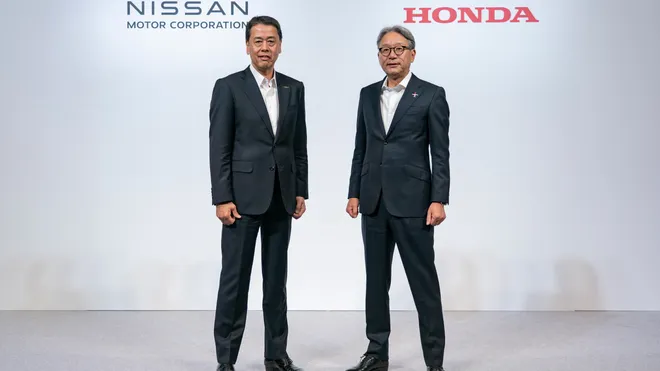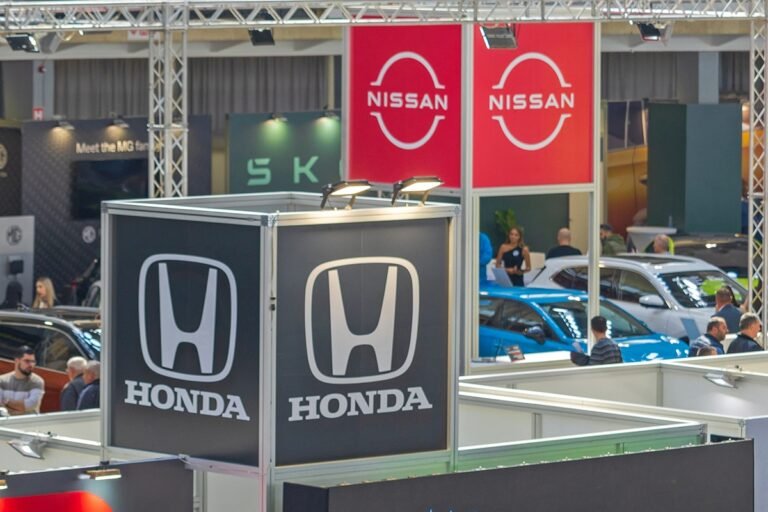Introduction: A Potential Game-Changer for the Auto Industry
In a move that could reshape the global automotive landscape, Honda and Nissan, two of Japan’s leading automakers, have initiated discussions for a potential merger. This unprecedented collaboration has the potential to create the world’s third-largest automaker, a position currently held by Stellantis. The merger reflects a strategic effort to navigate the challenges of electrification, innovation, and market competition.
Let’s delve into the implications, motivations, and potential outcomes of this monumental partnership.
Why the Merger Makes Sense: Shared Challenges and Goals
Honda and Nissan have faced a rapidly evolving automotive market, driven by:
- The Push for Electrification: Governments worldwide are setting aggressive targets to phase out internal combustion engines in favor of electric vehicles (EVs).
- Cost of Innovation: Developing EV platforms, autonomous driving technology, and advanced manufacturing processes requires enormous financial resources.
- Global Competition: Automakers are vying for dominance in key markets, especially in North America, Europe, and China.
By pooling resources, expertise, and infrastructure, Honda and Nissan aim to strengthen their positions in these challenging areas.
Key Details of the Merger Talks
Although the discussions are still in the preliminary stages, reports suggest the following points are being considered:
- Combined Production Capacity: The merger could result in a production output exceeding 10 million vehicles annually.
- Shared EV Platforms: Jointly developed platforms for electric and hybrid vehicles could reduce costs and accelerate production timelines.
- R&D Collaboration: A unified research and development effort could spur innovation in autonomous driving and battery technology.
While no formal agreement has been signed, both companies have expressed optimism about the potential synergies.
Impact on the Global Automotive Industry
If the merger materializes, it could significantly impact the global automotive landscape:
- Increased Market Share
The combined market share of Honda and Nissan would place them behind only Toyota and Volkswagen, solidifying their influence in major markets. - Stronger EV Portfolio
A joint venture would allow the companies to consolidate their EV offerings, positioning them as formidable competitors in the rapidly growing EV market. - Cost Efficiency
By sharing manufacturing plants, supply chains, and research facilities, Honda and Nissan could achieve substantial cost savings, enhancing profitability.
Challenges Ahead: Navigating the Roadblocks
Despite the potential benefits, the merger discussions face significant challenges:
- Cultural Differences: Honda and Nissan have distinct corporate cultures and management styles, which could complicate the integration process.
- Regulatory Approval: Gaining approval from antitrust authorities in multiple countries may prove time-consuming and complex.
- Existing Partnerships: Nissan’s existing alliance with Renault could pose conflicts, as the French automaker has significant stakes in Nissan’s operations.
To overcome these hurdles, both companies must prioritize transparency, collaboration, and strategic planning.
What This Means for Consumers
The merger could bring several benefits to consumers, including:
- Enhanced Vehicle Options: A broader range of models with improved technology and performance.
- Affordable Pricing: Cost efficiencies achieved through the merger could result in more competitively priced vehicles.
- Advanced Features: Access to cutting-edge autonomous and EV technologies developed through joint research efforts.
Consumers are likely to see a significant expansion in both automakers’ offerings, particularly in the electric and hybrid segments.
The Role of Electrification in the Merger
One of the driving factors behind the merger is the push toward electrification. Both Honda and Nissan have made substantial investments in EV development:
- Nissan’s EV Leadership: With the success of models like the Nissan Leaf, the company has established itself as a leader in the EV market.
- Honda’s Bold Ambitions: Honda has committed to phasing out gasoline-powered vehicles entirely by 2040, with a strong focus on battery technology and fuel cells.
Together, the two companies could leverage their strengths to develop affordable, high-performance EVs for a global audience.
How the Merger Could Shape Future Trends
If successful, the Honda-Nissan merger could set a precedent for future collaborations in the automotive industry. Other automakers may follow suit, forming strategic alliances to:
- Share Development Costs: Collaborating on EV platforms and autonomous technology.
- Expand Market Reach: Gaining access to new markets and consumer bases.
- Address Supply Chain Challenges: Mitigating disruptions by pooling resources and suppliers.
The trend toward consolidation could redefine the industry, with fewer but more robust players dominating the market.
Insights from Industry Experts
Industry analysts have weighed in on the potential merger, offering a mix of optimism and caution:
- Optimistic Outlook: Many experts believe the merger could create a powerhouse capable of driving innovation and setting new industry standards.
- Skeptical Views: Others highlight the challenges of integrating two large organizations with differing strategies, particularly in a highly competitive market.
Ultimately, the success of the merger will depend on how effectively Honda and Nissan align their goals and overcome logistical and cultural barriers.
Conclusion: A Bold Step Toward the Future
The Honda-Nissan merger talks represent a bold and visionary move to address the challenges of a rapidly evolving automotive industry. By joining forces, the two automakers aim to create a more competitive, innovative, and sustainable organization capable of leading the global market.
While the road ahead is fraught with challenges, the potential rewards—enhanced market share, cost efficiencies, and technological advancements—are too significant to ignore. If successful, this partnership could redefine the future of mobility and set a new benchmark for collaboration in the automotive world.
The next few months will be critical as the two companies work toward a formal agreement, laying the groundwork for a historic transformation in the global auto industry.





Leave a Comment